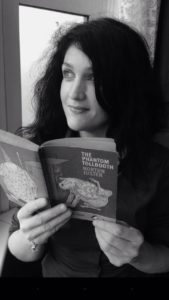I have been holding off writing about the Norwegian publishing phenomenon Karl Ove Knausgaard until the other day, when I picked up the first volume in English translation and realised how well it travels. The press are awash with, mostly raving, reviews of his autobiographical novels and interviews with the author. Zadie Smith has said she needed them ‘like crack’. Should you read them?
To fill you inn; five years ago, Knausgaard caused a publishing sensation in his native Norway when he came out with the first in a series of six books about, basically, himself. Yes, six books or 3000 thousand pages about his own life! How could this possibly be interesting, you might wonder. Well, intriguingly, a large number of people thinks so.
The books caused huge controversy, not the least because of Knausgaard’s sometimes painfully indiscreet portrayal of his close family, his deceased alcoholic father, the break-up of his first marriage and the mental problems of his current wife. Reportedly, Knausgaard’s father’s family severed all contact with him following the publication of the books; his bipolar wife was admitted to hospital.
Nevertheless, more than 500,000 Norwegians have read them, an extraordinary number in a country where the total population is a mere 5 million.
A Death in the Family, the first in the series which Knausgaard has called My Struggle (Min Kamp in Norwegian, an ironic nod to another, quite different book), came out in 2009. It was a book like no other, an extremely personal, warts-and-all autobiographical novel, which included the minute, personal and often humiliating details of Knausgaard’s life.
‘I’m somehow very close to everything’ Knausgaard explains to his wife as he wades through the decrepit house of his deceased father. And this is exactly where the author excels; he is intensely close to the details of everyday life. Reading his books is like stepping back in time, back to your childhood when everything was experienced with an intensity that fades as you grow into an adult. Indeed, Knausgaard is hugely preoccupied with this loss of experience.
A whole world lay between the trademarks of then and now, and as I thought about them, their sounds and tastes and smells reappeared, utterly irresistible, as indeed everything you have lost, everything that has gone, always does. The smell of short freshly watered grass when you are sitting on a football pitch one summer afternoon […] Or the taste of salt that inevitably gets into your mouth when you dive into the sea […] All of this still existed […] The sole difference, which is the difference between a child’s reality and an adult’s, was that they were no longer laden with meaning.
A Death in the Family is primarily a coming-of-age novel in which Knausgaard’s relationship with his cold, distant father features prominently. We are witnesses to his adolescent fumbling with girls, friends and alcohol and his relationship with his older brother, Yngve, a mix of boundless admiration, fear and love. Hovering in the background, is Knausgaard’s warm and kind, but mostly absent mother, the only person with whom he feels a connection.
The father dies a slow alcohol infused death, in particularly humiliating circumstances, and Knausgaard and his brother are left to clean up, tip-toeing around their dement grand-mother, with whom their father had been living, scraping, literally, dirt off the floor, while trying not to offend her.
The appeal of Knausgaard’s books is in their recognition of the small every day events which, like it or not, fill up a large part of our lives. His writing is extremely detailed, visual and perceptive, almost like a slow-motion film: a thirty-page description of Knausgaard and his brother cleaning their father’s filthy house, a seventy-page description of teenage Knausgaard hiding a bag of beer bottles in the snow in preparation for an uneventful new year’s eve. Knausgaard’s experiences are unique and universal at the same time. His experiences are everyone’s experiences; he sets words to how we feel. It is surprisingly compelling reading.
But A Death in the Family is so much more than a detailed account of a man’s life. It is also a philosophical pondering on how to live life and, most importantly, deal with death. The extraordinary opening paragraph will give you a feel for the author’s raw, up-front confrontation of the taboo of death.
For the heart, life is simple: it beats for as long as it can. Then it stops. Sooner or later, one day, this pounding action will cease of its own accord, and the blood will begin to run towards the body’s lowest point, where it will collect in a small pool, visible from the outside as a dark, soft patch on ever whiter skin, as the temperature sinks, the limbs stiffen and the intestines drain.
Knausgaard’s writing might or might not appeal; you’ll either love or hate these books. Book critics, though, have for the most part embraced Knausgaard enthusiastically, likened him to Proust and praised his refreshingly original style and literary ambition. I have attached a few reviews to give you a feel for the critical reception.
The first three books in the series, A Death in the Family, A Man in Love and Boyhood Island, are out in English, beautifully translated by Don Bartlett. I can’t wait to read the second. Whether I will read all six remains to be seen.
Reviews:
A Death in the Family is published by Vintage, 416 pages.





